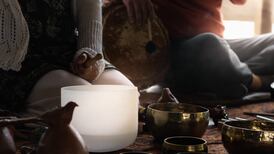We may be going through a golden age for whiskey distilling, especially in this part of Ireland, but that’s nothing new.
Back in the 18th century, Ireland had over a thousand licensed distilleries, so many in fact that in 1758 the minimum capacity of stills was set at 200 gallons, to reduce the proliferation of small whiskey-making operations, many of them home based.
Some of the great names in the whiskey business date back to the late 18th century, with Jameson, founded in Dublin in 1780, and Power’s, also established in Dublin, in 1791.
The origins of distilling were in Asia and from there, it was developed by the Moors
Power’s originated the concept of Baby Powers and its former distillery lives on as the National College of Art and Design.
Even when Jameson and Powers came into being, the art of distilling had been actively practised in Ireland for some four centuries, although whiskey distilling dates back the best part of 1, 500 years.
The origins of distilling were in Asia and from there, it was developed by the Moors, who used an alembic apparatus to distill the essence of plants and flowers, to make the likes of rose water.
The art of distillation was brought to Ireland by monks, probably from the Moors in Spain, and they adapted the alembic concept to create the pot still so renowned in Irish whiskey.
The first written reference to whiskey came in the Red Book of Ossory, in 1324, 170 years before the first written records were made of whisky in Scotland, in the form of primitive excise returns.
Here in Ireland, we not only developed a huge number of distilleries, but also a thriving illegal industry, in the shape of poitín.
By the early 19th century, consumption of whiskey, both legal and illegal, had become a huge problem, creating fertile ground for Fr Theobald Mathew, who founded the temperance movement in Cork in 1838.
Like all such movements, it surged quickly, then fell back. Within a short while, Fr Mathew had signed up 150,000 adherents and for a few short years, his preachings had a dramatic effect on whiskey consumption.
Yet throughout the 19th century, many fine distilleries were built, such as Persse’s on Nuns Island in Galway.
Derelict buildings, once distilleries, can still be seen throughout Ireland. Towns and cities all over Ireland lost their distilleries, and still today partial ruins at least can often be seen.
Drogheda was once almost on a par with Dublin in terms of whiskey distillation, while Belfast and Derry were also important distilling centres.
The catalogue of lost distilleries is elegiac for anyone interested in the history of Irish whiskey, yet too often, little material or indeed whiskey was left for future generations. In the case of Persse’ s distillery in Galway, little survived except for the very fine mirrors it installed in pubs in the west of Ireland.
Irish distillers also created a spectacular “own goal” . Aeneas Coffey, a former excise man, adapted the traditional pot still so that it could produce whiskey far more economically and quickly.
By the early 1980s, Ireland was down to two distilleries, Bushmills, the oldest licensed distillery in the world, and Midleton in Cork
In the main, distilleries in Ireland didn’ t take up the idea, but Scottish distillers adopted it with enthusiasm, allowing them to gain a worldwide lead over Irish whiskey, which they’ve never lost, although Ireland has made up much of the leeway in recent years, with whiskey often considered to have a much smoother taste than whisky.
Today Scotland has close on 130 distilleries, while in our new golden age of whiskey distilling, we now have just over 20.
Some of the newer distilleries, like those in Dublin, Dingle and Ballykeefe in Kilkenny, have made a distinctive mark, while among the latest of the new distilleries are those on the Powerscourt estate in Co Wicklow and on the Slane Castle estate in Co Meath.
The new distillery at St James’s Gate, Dublin, is due to have its first whiskey ready in 2022.
The Echlinville distillery in Co Down was the first new distillery in the North for over 130 years.
A further 20 or so distilleries, including four in the North, are either planned or in development.
Some of the new distilleries are also producing gin, another drink that has also been having a huge revival.
Long-established brands have also undergone much refreshment, such as Tullamore Dew, which combines the three strands of Irish whiskeymaking: grain, pot still and malt.
By the early 1980s, Ireland was down to two distilleries, Bushmills, the oldest licensed distillery in the world, and Midleton in Cork.
The turnaround since then, by both foreign- owned and Irish- owned distilleries, has been remarkable.













